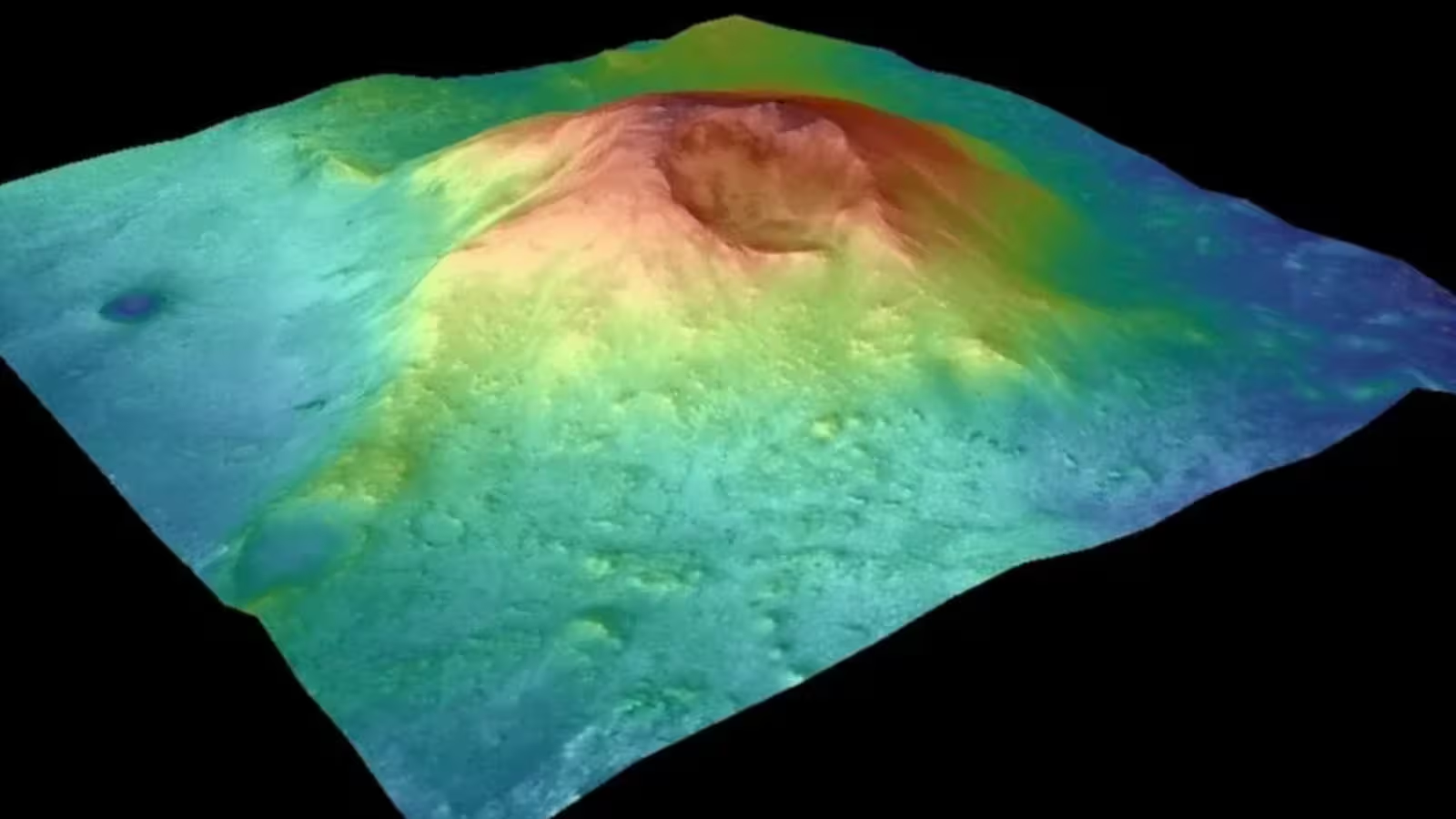5 Minutes
Unveiling Martian Mysteries: Jezero Mons Under the Spotlight
Mars, recognized for its striking landscape filled with craters, deep valleys, and puzzling geological features, continues to fascinate scientists searching for clues about its ancient past. Recent research suggests that a previously overlooked mountain on the rim of Jezero Crater—one of Mars’ most closely studied regions—may actually be a dormant volcano concealed in plain sight. This revelation adds a crucial new chapter to the story of the Red Planet’s geological evolution and the ongoing search for signs of ancient Martian life.
Scientific Context: The Quest to Uncover Mars’ Volcanic Activity
Since early Mars exploration, planetary geologists have been drawn to Jezero Crater—a site believed to have once hosted an ancient lake—due to its unique terrain and scientific potential. The importance of this crater escalated in 2021 when NASA’s Perseverance rover landed within it, equipped to search for signs of past microbial life and collect rock samples for future study. Until recently, however, a mountain named Jezero Mons on the crater’s rim evaded detailed scrutiny.
For years, speculation lingered regarding the true nature of Jezero Mons. Professor James Wray of Georgia Tech, a planetary geologist, was among the first to suspect the mountain’s volcanic origins after studying early, low-resolution images in 2007. Yet, definitive evidence remained out of reach, largely because research priorities at Jezero focused on its ancient lakebed and water history.
Breakthrough Discoveries: Data from Mars Rovers and Orbiters
The turning point arrived as the Perseverance rover began its exploration. Contrary to expectations of sedimentary bedrock—what one would anticipate in a former lake basin—Perseverance discovered that much of the crater floor was composed of igneous, or volcanic, rock. This finding raised the possibility that Jezero Mons might be the source of these rocks, reigniting interest in its true identity.
To investigate, Wray collaborated with lead author Sara Cuevas-Quiñones from Brown University and a team of planetary scientists, leveraging an array of mission data from the Mars Odyssey Orbiter, Mars Reconnaissance Orbiter, ExoMars Trace Gas Orbiter, and Perseverance itself. This comprehensive remote sensing campaign enabled the team to characterize Jezero Mons in detail and compare its features to known volcanoes on both Mars and Earth.
Volcanic Signatures: Morphology and Material Evidence
Researchers identified several volcanic hallmarks. Jezero Mons shares its size and shape with established Martian volcanoes such as Zephyria Tholus and Apollinaris Tholus, as well as Antarctica’s Mount Sidley—a terrestrial analogue. Intriguingly, the mountain’s surface displays very few impact craters and poor thermal retention, suggesting a coating of volcanic ash. And on Jezero Mons’ northwestern flank, the rim shows patterns of historical lava flows reaching toward the crater floor, potentially explaining the volcanic rocks sampled by Perseverance.
As Professor Wray explains: “If we’re just now recognizing a volcano in one of the best-studied sectors of Mars, the planet may harbor many more volcanic features awaiting discovery.”
Implications for Mars Exploration and the Search for Life
If Jezero Mons is indeed volcanic, its proximity to the ancient lakebed has profound implications. On Earth, the interaction of water and volcanic heat—known as hydrothermal activity—creates environments that can foster life even in extreme conditions. The presence of such a volcano beside an ancient Martian lake raises the possibility that similar hydrothermal systems once existed on Mars, potentially generating energy sources that could have supported microbial life billions of years ago.
The study, published in May in Communications Earth & Environment, presents some of the clearest evidence yet for active volcanism in Jezero Crater’s past. However, confirming Jezero Mons’ origins and the timeline of volcanic activity will require more direct analysis of rock samples.
The Role of Sample Return Missions and Future Prospects
The Perseverance rover has now collected Martian rock and soil samples specifically from areas influenced by Jezero Mons. Scientists anticipate that radioisotope dating of these samples—once returned to Earth—could reveal when the volcanic activity occurred and provide a more precise age for Jezero Crater itself. However, retrieving these samples presents a significant challenge.
Currently, NASA and its international partners are assessing two strategies for the Mars Sample Return (MSR) mission. The program aims to deliver Perseverance’s samples to laboratories on Earth, enabling advanced analyses that are not possible remotely. Yet, the 2026 U.S. federal budget proposal threatens the mission’s future, with the possibility of funds being redirected away from MSR and toward future human Mars missions instead.
Despite these uncertainties, Professor Wray remains optimistic. “If these samples are returned to Earth, we can do incredible, groundbreaking science with them,” he emphasized, underscoring the transformative potential of direct investigation into Martian geology.
Conclusion
The discovery that Jezero Mons may be a hidden volcano dramatically reshapes our understanding of Mars’ geologic history and underscores how much there remains to learn about the Red Planet’s surface and potential habitability. As Perseverance continues its mission and scientists await the possible return of invaluable Martian samples, interest in Jezero Crater—and its enigmatic mountain—remains high. This research not only enhances our knowledge of planetary volcanism but also pushes humanity closer to answering fundamental questions about the origins and distribution of life in our solar system.
Source: gizmodo



Comments